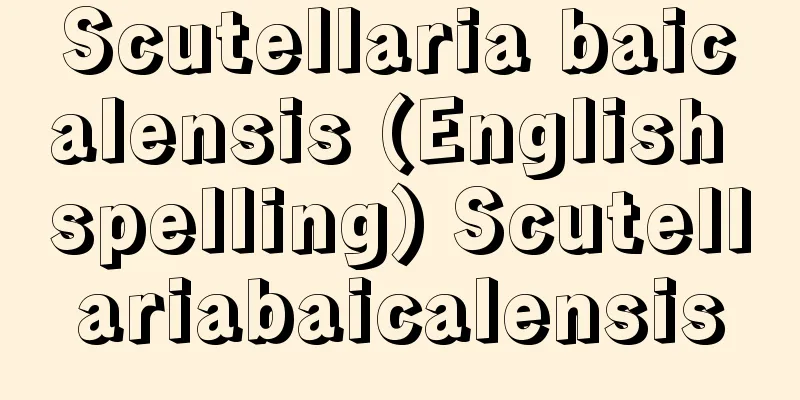"The Book of Kanroku"

|
...In addition, and this is also a matter of historical convention, while it does not include things that could certainly be considered dictionaries in the modern sense, the classification of "dictionaries" can also include things that are somewhat distant from what is commonly meant by dictionaries today. The "Elementary School" category in the "Siku Quanshu Zongmui" is divided into three categories: Category 1 (Explanatory Notes), Category 2 (Dictionaries), and Category 3 (Rhyming Scriptures). When referring to "Dictionaries," the following are included in Category 2: (1) classified vocabulary collections as literacy textbooks, such as the "Shishuu Pian," "Cangjie Pian," and "Qiuju Pian," (2) works that classify and explain characters according to their shapes, such as the "Shuowen Jiezi," "Zi Lin," "Yupian," "Longgan Shuyuyou," "Ruipei," "Zhiyi," "Zhengzi Tong," and "Kangxi Dictionary," and (3) works that attempt to define the orthodoxy of characters, such as the "Ganlu Dishu," "Five Classics Characters," and "Nine Classics Characters," etc. In addition, the whole of Category 1 to 3 that belongs to the "Elementary School" category is sometimes referred to as "Dictionaries." Therefore, there are two types of "dictionaries": wide and narrow. From [Slang]…The criteria for distinguishing between proper and vulgar characters vary from era to era. For example, in the Chinese Han Dynasty's Shuowen Jiezi, 躬 is considered a vulgar form of 躳, but in the Tang Dynasty's Ganlu Zishu, both are considered proper characters. The Ganlu Zishu was the first dictionary written by Yan Yuansun to distinguish between proper and vulgar character forms, and all subsequent dictionaries followed this. … *Some of the terminology explanations that refer to "Ganroku Jishu" are listed below. Source | Heibonsha World Encyclopedia 2nd Edition | Information |
|
…それに,これもそうした歴史的な慣習の問題だが,そういうふうに,現在的意味で確実に辞書,辞典でありうるものを含まぬ反面,この〈字書〉という分類は,逆に現在普通にいう辞書とはやや遠いものを含むこともある。《四庫全書総目》の〈小学〉類は,第1類〈訓詁〉,第2類〈字書〉,第3類〈韻書〉の3類に分かれているが,〈字書〉というときこの第2類に含まれる(1)識字教科書としての分類語彙集=《史籀(しちゆう)篇》《蒼頡(そうけつ)篇》《急就篇》など,(2)字形によって文字を分類解説したもの=《説文解字》《字林》《玉篇》《竜龕手鏡(りようがんしゆきよう)》《類篇》《字彙》《正字通》《康熙字典》など,(3)字体についてその正俗等を規定しようとするもの=《干禄(かんろく)字書》《五経文字》《九経字様》など,等々が〈字書〉と呼ばれるほか,1類から3類まで〈小学〉類に属するもの全体を〈字書〉ということもある。〈字書〉は,したがって広狭2様の場合があることになる。… 【俗字】より…正・俗をわける基準は時代によって異なる。たとえば,中国の漢代の《説文解字》では〈躬〉を〈躳〉の俗字とするが,唐代の《干禄字書》では,ともに正字とする。《干禄字書》は顔元孫の手になる楷書による字形の正・俗を分けた最初の字書であり,その後の字書はすべてこれによる。… ※「《干禄字書》」について言及している用語解説の一部を掲載しています。 出典|株式会社平凡社世界大百科事典 第2版について | 情報 |
Recommend
Ethnic migration
When a certain ethnic group leaves its traditiona...
Morimitsu Kouki - Morimitsu Kouki
This is the diary of Hirohashi Morimitsu, a noblem...
Rosa canina (English spelling) Rosacanina
…[Naruhashi Naohiro]. . … *Some of the terminolog...
Komon - Komon
Komon, chugata, and ogata were originally names u...
Basic vocabulary - Kisogoi (English spelling) basic vocabulary
This refers to the vocabulary that is most frequen...
Phleum
...an annual grass of the grass family that grows...
Rhyme Mirror - Inkyo
A Chinese rhyme chart. The author is unknown, but...
Aigo (rabbitfish)
A marine fish belonging to the order Perciformes ...
Woodman, WR
...The goal of the group was to decipher the text...
Kusafugu - Kusafugu
This marine fish belongs to the order Tetraodonti...
Arion
A manga by Yoshikazu Yasuhiko. Based on the Greek ...
Letter of Judgment - Saikyojo
This refers to a written judgment in a trial in t...
Viola grypoceras (English spelling)
… [Yukio Taniguchi]. … *Some of the terminology t...
Princess Abe
...The 43rd empress of the early Nara period. Rei...
Abū Kāmil
He was an algebraist active in Cairo from around 8...









![Iya [Hot Springs] - Iya](/upload/images/67cf720b7b282.webp)